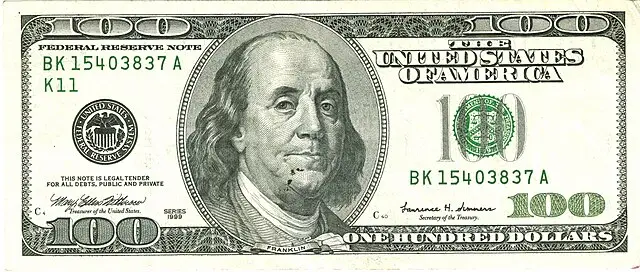Dollar slumps as US faces loss of confidence – impact on Indian rupee, other currencies

Dollar Slumps Amid Global Uncertainty — What It Means for the Indian Rupee and Other Currencies
In a surprising turn, the U.S. dollar has taken a significant hit in global markets, triggering ripple effects across multiple currencies, including the Indian rupee. Amid rising economic uncertainty and shaky confidence in America’s financial direction, investors are shifting their focus to other safer assets and currencies.
📉 Dollar Drops as Global Confidence Wavers
The dollar’s sharp slide comes at a time when international investors are growing increasingly wary of the U.S. economic outlook. Concerns have mounted over recent trade policy decisions, including renewed tariff threats and talk of aggressive economic nationalism. These developments have eroded faith in U.S. financial leadership and have led to a wave of sell-offs in dollar-based assets.
What was once viewed as a safe haven currency is now showing signs of strain. Currency analysts have pointed out that this is one of the dollar’s steepest weekly declines in recent memory.
The U.S. Dollar Index, which measures the greenback against a basket of major global currencies, has fallen below 100 — a level not seen in nearly two years. This downturn reflects a broader shift in sentiment as global markets digest growing trade tensions and uncertain monetary signals from the U.S. Federal Reserve.
🇮🇳 Rupee Reacts: Recovery Despite Earlier Losses
In the midst of the dollar’s slump, the Indian rupee has shown a mixed but noteworthy performance. Earlier in the week, the rupee faced downward pressure and recorded its worst weekly loss since February, dropping around 0.9%. However, Friday saw a reversal. The rupee climbed nearly 0.7%, closing at 86.04 against the dollar.
Currency traders say the rupee’s bounce-back was driven largely by the weakening dollar, which cushioned earlier losses. Market participants also noted higher foreign fund inflows and stable crude oil prices as supporting factors for the rupee’s strength toward the end of the week.
At the same time, the volatility in the rupee market is rising. The one-month implied volatility—a metric that captures expected currency swings—rose to 4.5%, the highest level seen since mid-2023. This suggests that while the rupee has gained some ground, uncertainty remains high.
🌏 Other Currencies See Gains
The dollar’s drop has not only impacted the rupee but also boosted other major currencies. The euro has hit a three-year high, while the Japanese yen and Swiss franc have also seen increased demand. These currencies are now attracting investors who are moving their capital away from dollar assets amid fears of a prolonged U.S. economic slowdown.
In Asia, currencies like the South Korean won and the Indonesian rupiah have also appreciated, riding the wave of dollar weakness and improved regional trade sentiment.
🏦 What’s Fueling the Dollar’s Slide?
Several factors are behind the dollar’s sudden downturn:
- Trade Policy Uncertainty: The talk of new tariffs and tougher trade stances under the Trump-led campaign have raised fears of trade retaliation and economic slowdown.
- Loss of Global Trust: Financial markets thrive on predictability. Unpredictable signals from U.S. policymakers, including mixed messaging from the Federal Reserve, have made global investors nervous.
- Shift in Global Capital: Investors are now parking money in other stable economies. This shift is reducing the demand for U.S. assets and putting downward pressure on the dollar.
🔮 What Lies Ahead for the Rupee?
The rupee’s near-term path is tied closely to what happens next in the U.S. economy and currency markets. If the dollar continues to lose strength, the rupee could gain further. However, it’s not entirely smooth sailing.
Here are a few factors to watch:
- Oil Prices: India imports most of its crude oil, and rising oil prices could weigh on the rupee.
- Foreign Portfolio Flows: Sustained inflows from global investors could support the rupee, but any risk-off sentiment may reverse these flows.
- U.S. Fed Moves: Any unexpected decisions or commentary from the U.S. Federal Reserve could change the course of the dollar—and with it, the rupee.
📊 Expert Take
Currency analysts believe the dollar is entering a phase of correction. However, whether this trend continues will depend on how the U.S. handles its internal policies, including trade, fiscal discipline, and interest rate management.
In India, economists advise caution. “The rupee is in a better position than it was earlier this week, but volatility will remain,” one Mumbai-based analyst said. “We could see further appreciation, but sudden shifts are possible if global risks intensify.”
✅ Conclusion
The dollar’s current slide highlights a broader shift in investor sentiment. As global markets look for stability, currencies like the rupee, euro, and yen are stepping into the spotlight. For India, this is both a challenge and an opportunity. While a weaker dollar offers temporary relief, the path ahead will be shaped by how global and domestic factors play out.
Staying informed, hedging risks, and watching global cues will be key for anyone involved in currency, trade, or investment planning in the months ahead.






